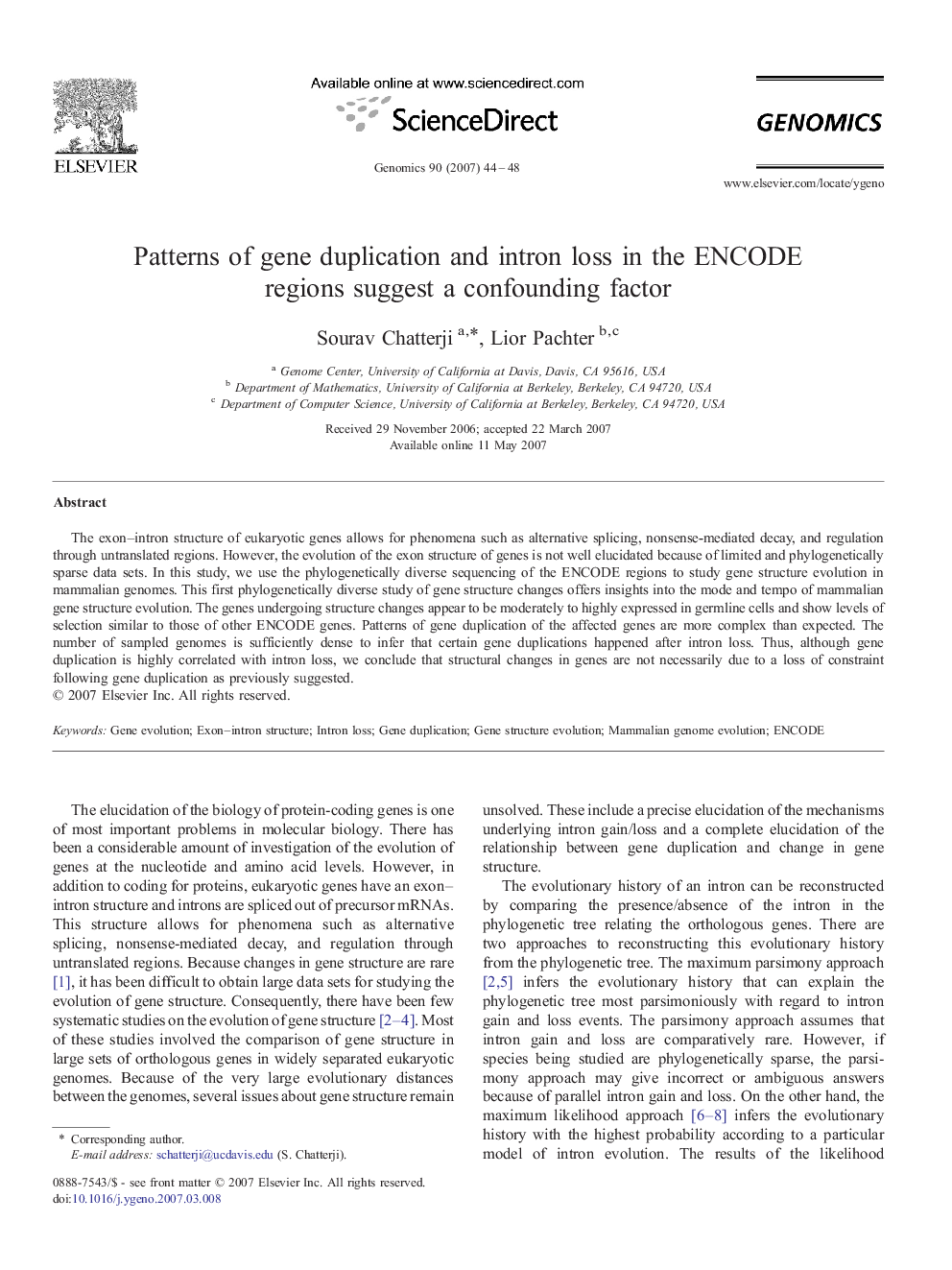| Article ID | Journal | Published Year | Pages | File Type |
|---|---|---|---|---|
| 2821522 | Genomics | 2007 | 5 Pages |
The exon–intron structure of eukaryotic genes allows for phenomena such as alternative splicing, nonsense-mediated decay, and regulation through untranslated regions. However, the evolution of the exon structure of genes is not well elucidated because of limited and phylogenetically sparse data sets. In this study, we use the phylogenetically diverse sequencing of the ENCODE regions to study gene structure evolution in mammalian genomes. This first phylogenetically diverse study of gene structure changes offers insights into the mode and tempo of mammalian gene structure evolution. The genes undergoing structure changes appear to be moderately to highly expressed in germline cells and show levels of selection similar to those of other ENCODE genes. Patterns of gene duplication of the affected genes are more complex than expected. The number of sampled genomes is sufficiently dense to infer that certain gene duplications happened after intron loss. Thus, although gene duplication is highly correlated with intron loss, we conclude that structural changes in genes are not necessarily due to a loss of constraint following gene duplication as previously suggested.
